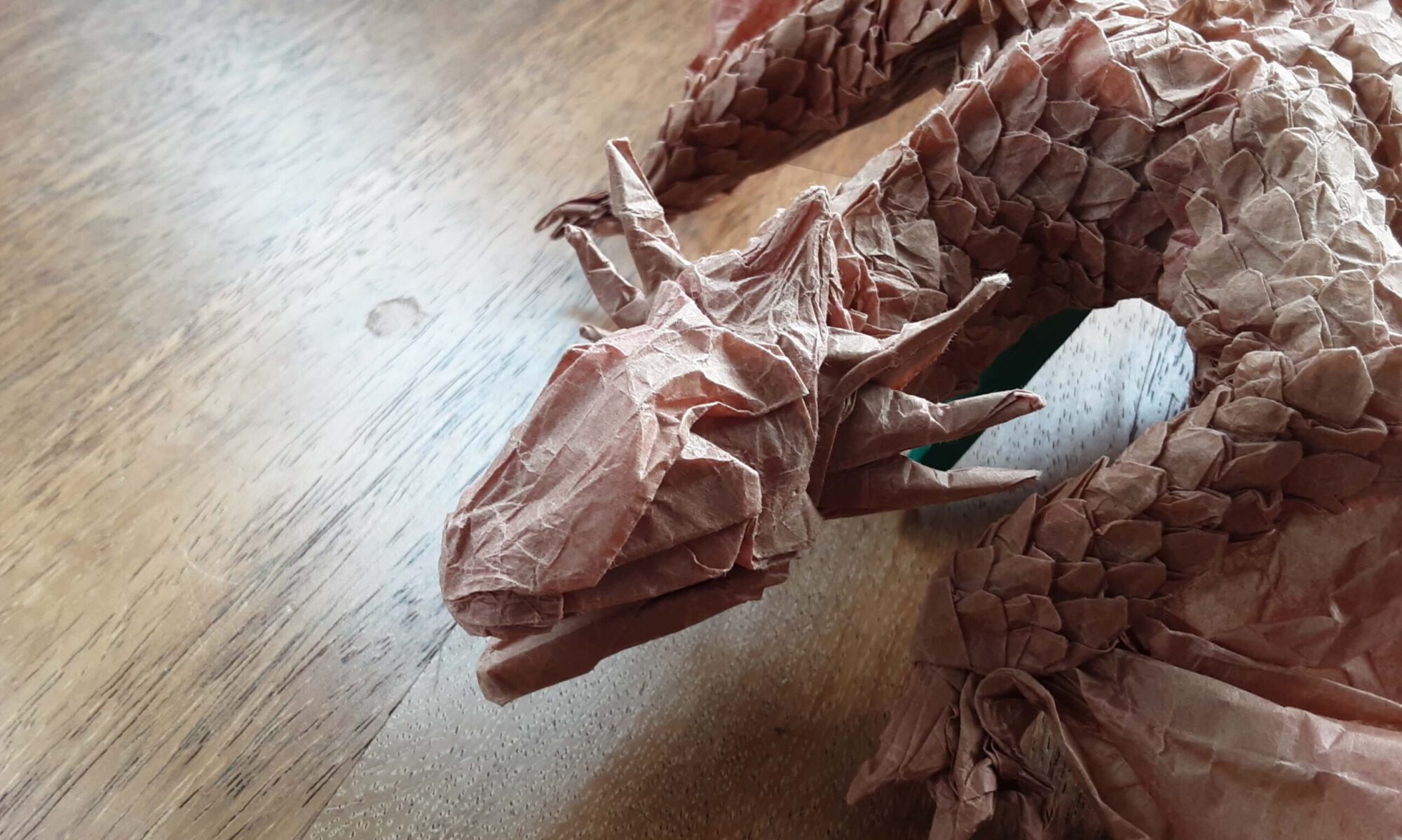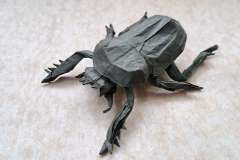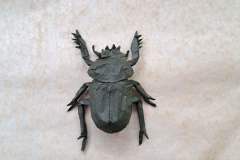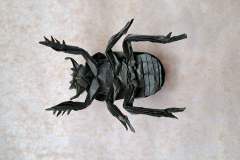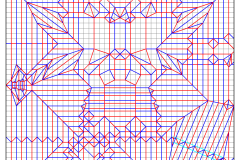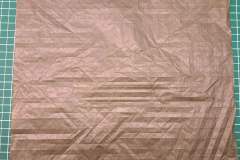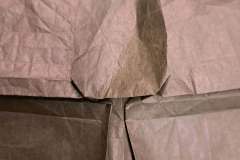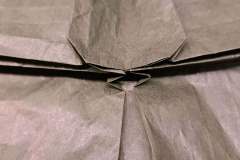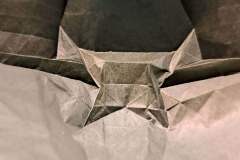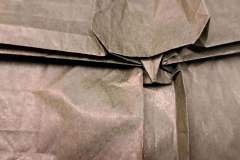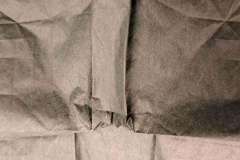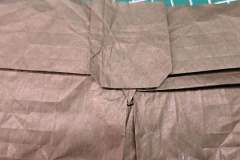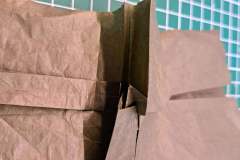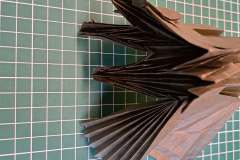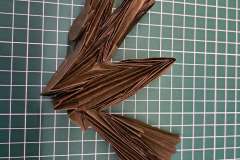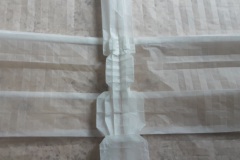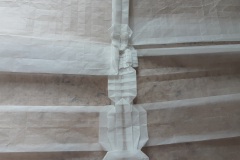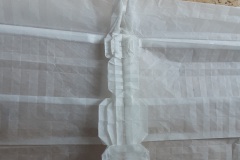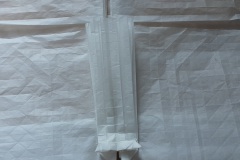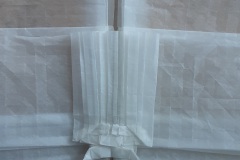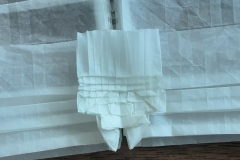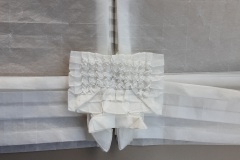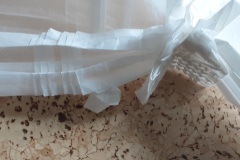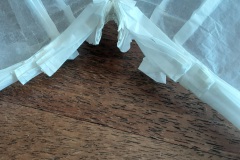When first trying out crease patterns, I soon had a problem: I could not (or just barely) fold them. Of course, practice helps, I learned to solve more and more complex crease patterns.
Using a partial collapse has often helped me a great deal to fold even the most complex models from a crease pattern.
When solving a crease patterns, it is often possible to split up the collapse. This allows the folder to solve the crease pattern part by part instead of all at onece. I call this a partial collapse.
Due to the fact, that there are vast differences in crease patterns, I have not found a general way for a partial collapse, however I use some guidelines. These can be applied in many cases, but for every crease pattern.
- Analyse the crease pattern:
Where are complex parts, which areas will be visible in the finished model - I prefer to start with the most complex part in the middle of the crease pattern
(for beetles e.g. the pattern on the back) - Many details can be added after folding most of the base (e.g. claws)
- I try not to crease through areas visible in the finished model, but it can help to make creases that will not be visible later to flatten the paper after a step in the collapse.
The collapse of my Scarab V2 to illustrate, how my partial collapses work:
Flattening the paper during the collapse allowed me to clean up the center. It had the nice side effect of making the model easier.
Even the most complex crease patterns may allow a partial collapse, e.g. Kota Imai´s Japanese Spiny Lobster:
Making all the details first, I was able to fold the model from a 66cm square and have a precise result. Without the partial collapse, I could not have achieved that.
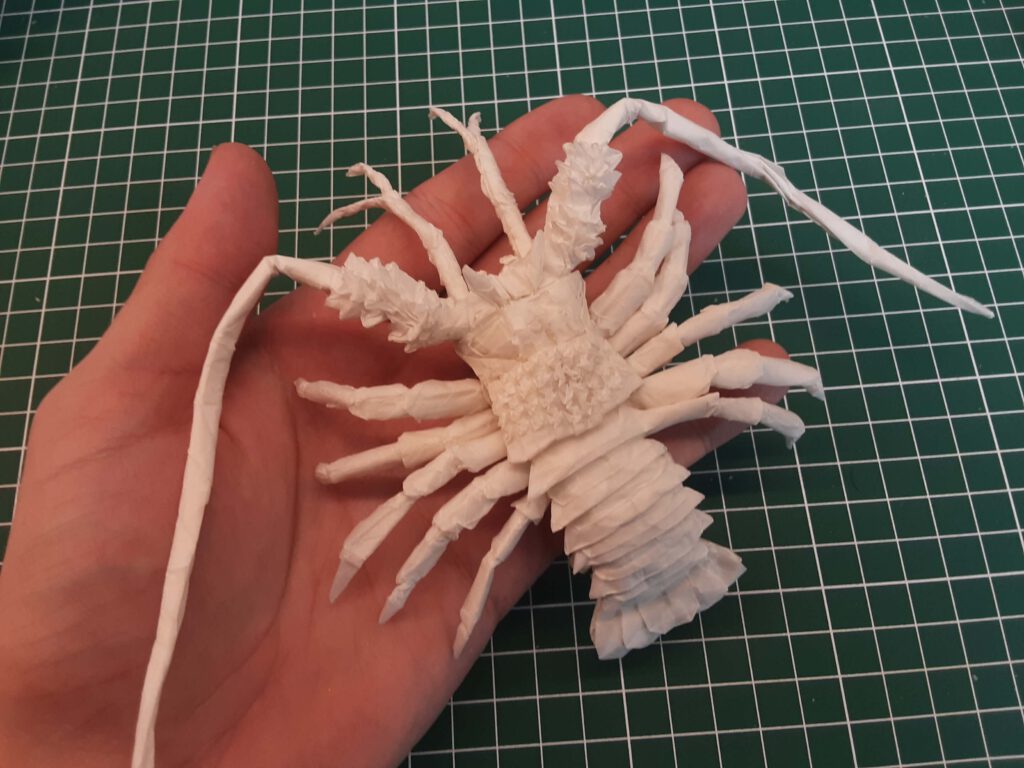
Unfortunately, I will not really be able to teach you, how to find a partial collapse. For some models (e.g. my Ant V3), that´s not even possible. But I´m sure, if you just try and use this technique (you might already be doing this), you will find your way how to deal with super complex crease patterns.
Notes
Step by step instructions are an extreme case of a partial collapse, sometimes you can split a crease pattern into so many tiny steps, that it feels like folding an instruction.
